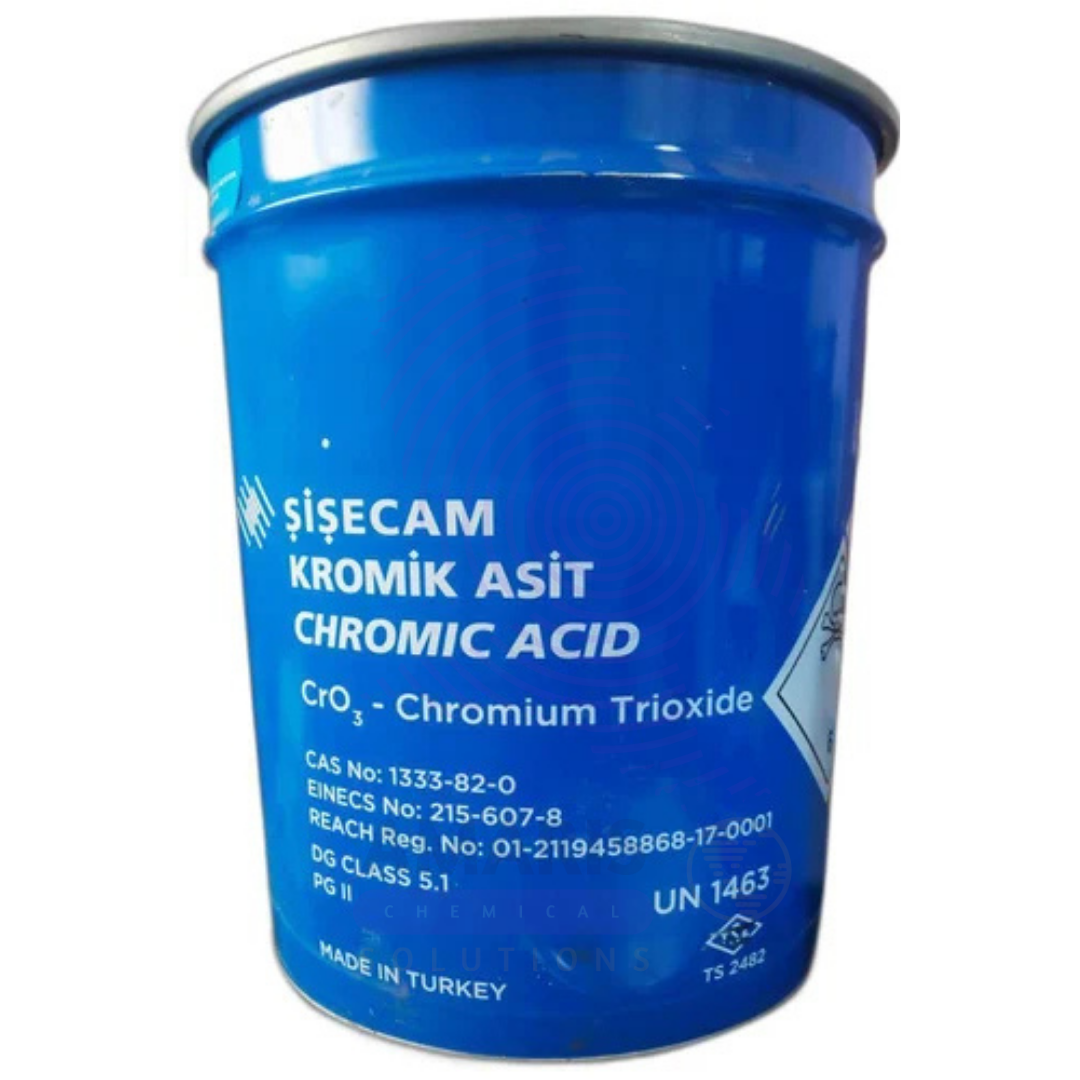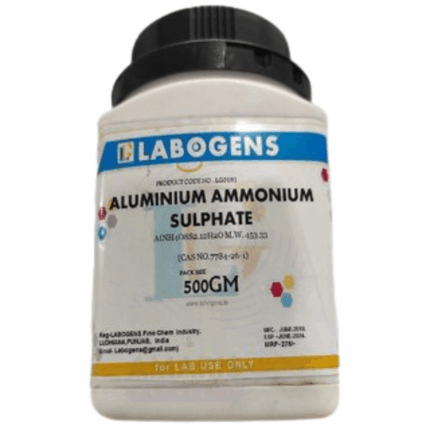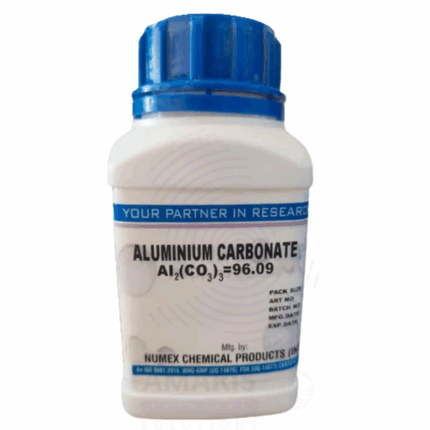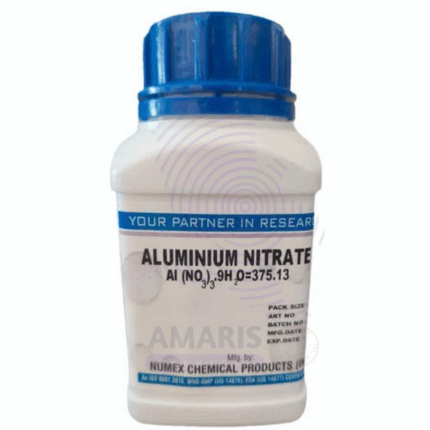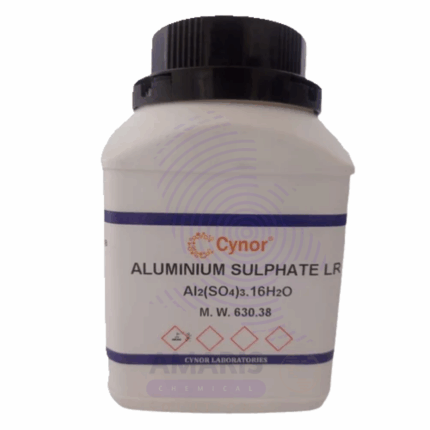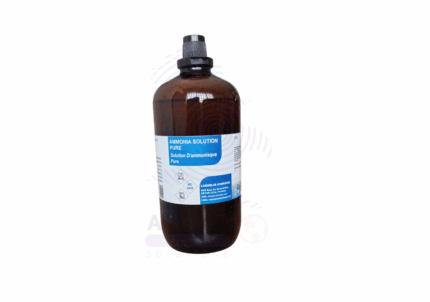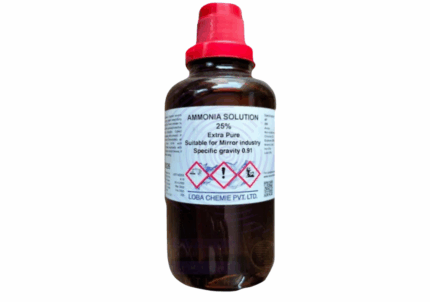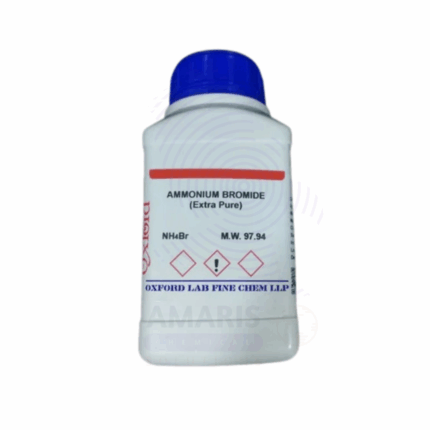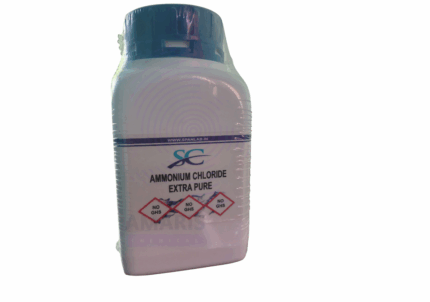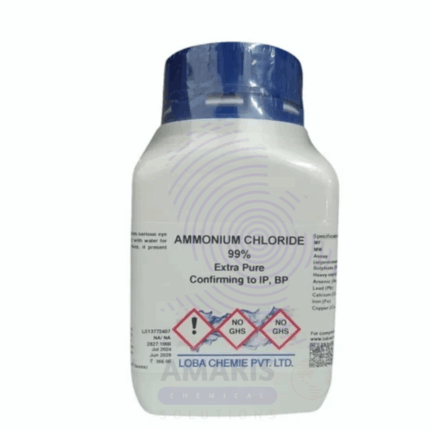Chromic Acid
Whatsapp Order
Chromic Acid is a powerful oxidizing agent, typically available as a bright orange-red crystalline solid or concentrated solution containing chromium trioxide (CrO₃) dissolved in sulfuric acid. It is a highly corrosive and strong acid used predominantly in industrial applications such as metal finishing, cleaning, and surface treatment. Chromic acid is valued for its excellent oxidative and cleaning properties, particularly in chromium plating, anodizing, and etching processes. Due to its toxicity and environmental hazards, its handling and disposal are strictly regulated. It plays a crucial role in chemical synthesis, laboratories, and manufacturing.
Description
Table of Contents
Toggle
Chromic Acid
Primary Uses
- Metal Finishing & Surface Treatment
- Used extensively in chromium plating baths to deposit decorative, hard, and corrosion-resistant chromium coatings on metals.
- Employed in anodizing aluminum to produce a durable and corrosion-resistant oxide layer.
- Utilized in surface preparation, cleaning, and etching of metals before further processing or coating.
- Acts as a cleaning agent to remove organic contaminants and scale from metal surfaces.
- Chemical Industry & Laboratories
- Serves as a strong oxidizing agent in various organic synthesis reactions.
- Used for cleaning laboratory glassware and equipment due to its powerful oxidizing and cleansing properties.
- Utilized in the production of dyes, pigments, and chemicals requiring oxidation steps.
Secondary Uses
- Wastewater Treatment
- Applied in controlled amounts to oxidize and remove certain organic contaminants and pollutants.
- Electronics Industry
- Used for etching and cleaning semiconductor materials and electronic components.
- Analytical Chemistry
- Employed as a reagent for chemical analysis and titrations requiring strong oxidizing conditions.
KEY PRODUCT FEATURES
1. Basic Identification Attributes
- Chemical Name (IUPAC): Chromic Acid (often referring to aqueous solution of chromium trioxide in sulfuric acid)
- Common/Trade Name: Chromic Acid
- CAS Number: 1333-82-0 (chromium trioxide)
- HS Code: 2841.70.00
- Molecular Formula: H₂CrO₄ (for chromic acid solution)
- Synonyms:
- Chromium trioxide solution
- Chromium(VI) oxide solution
- Chromic acid solution
2. Physical & Chemical Properties
- Physical State: Orange-red crystalline solid (chromium trioxide); or orange-red liquid (chromic acid solution)
- Color & Odor: Orange-red; odorless or slight acidic smell
- Melting Point: 197°C (chromium trioxide)
- Boiling Point: Decomposes before boiling
- Density: ~2.7 g/cm³ (solid); solution varies by concentration
- Solubility: Highly soluble in water, forming chromic acid solution
- Stability: Strong oxidizer; stable if stored properly but reacts violently with organic materials
3. Safety & Hazard Attributes
- Hazard Class (GHS): Corrosive, oxidizer, carcinogenic (Chromium VI compounds)
- NFPA Ratings: Health 4, Flammability 0, Reactivity 2
- Exposure Limits: OSHA PEL = 0.005 mg/m³ (Chromium VI)
- Toxicity: Highly toxic, carcinogenic, mutagenic, and harmful by inhalation, ingestion, and skin contact
- Reactivity: Strong oxidizer; reacts violently with reducing agents and organic substances
4. Storage & Handling Attributes
- Storage Conditions: Store in corrosion-resistant containers in cool, dry, well-ventilated area away from incompatible substances
- Container Type: Glass or polyethylene-lined steel containers
- Shelf Life: Stable if stored properly
- Special Handling: Use full PPE including acid-resistant gloves, face shield, and respirator; handle in fume hoods or well-ventilated areas
5. Regulatory & Compliance Attributes
- Classified as hazardous waste; strict disposal regulations apply
- Regulated under OSHA, EPA, REACH, and other national and international agencies
- Transportation: Classified as dangerous goods (Corrosive, oxidizer)
- FDA Status: Not permitted for food or pharmaceutical use
6. Environmental & Health Impact
- Ecotoxicity: Highly toxic to aquatic life; causes long-term environmental damage
- Persistence: Persistent in environment; chromium VI is highly mobile in soil and water
- Bioaccumulation: Potential for bioaccumulation and biomagnification
- Carcinogenicity/Mutagenicity: Classified as Group 1 carcinogen by IARC
- Biodegradability: Not biodegradable; requires specialized treatment
SAFETY HANDLING PRECAUTIONS
Safety Handling Precautions
- PPE: Acid-resistant gloves, goggles, face shield, lab coat, and respirator
- Handling: Avoid inhalation, ingestion, and skin contact; use only in fume hoods or well-ventilated areas
- Storage: Keep container tightly closed and stored away from incompatible materials (organic substances, reducing agents)
- Hygiene: Wash thoroughly after handling; no eating or drinking in work area
First Aid Measures
- Inhalation: Move victim to fresh air immediately; administer oxygen if breathing is difficult; seek urgent medical attention
- Skin Contact: Rinse immediately with plenty of water for at least 15 minutes; remove contaminated clothing; seek emergency medical care
- Eye Contact: Flush eyes thoroughly with water for at least 15 minutes; obtain immediate medical assistance
- Ingestion: Do NOT induce vomiting; rinse mouth with water; seek immediate medical attention
Firefighting Measures
- Fire Hazards: Non-flammable but strong oxidizer; can intensify fires
- Extinguishing Media: Use water spray, foam, or dry chemical extinguishers; avoid dry powder extinguishers that may react
- Special Precautions: Firefighters must wear full protective clothing and self-contained breathing apparatus
- Decomposition Products: May release toxic chromium oxides and sulfur oxides when heated
Related products
Aluminium Ammonium Sulphate Extra Pure
Aluminium Ammonium Sulphate Extra Pure, also known as ammonium alum, is a high-purity double salt composed of aluminum sulfate and ammonium sulfate, typically appearing as colorless or white crystalline granules. Valued for its excellent stability and solubility in water, it is widely used in analytical chemistry, dye mordanting, and laboratory reagent preparations. Its ability to precipitate proteins makes it useful in biochemical applications, while its astringent and antimicrobial properties support its role in pharmaceutical and cosmetic formulations. The extra pure grade ensures minimal impurities, making it suitable for high-precision scientific work. It should be stored in a tightly sealed container in a dry, cool area to prevent moisture absorption and maintain its effectiveness.
Aluminium Carbonate Extra Pure
Aluminium Carbonate Extra Pure is a high-purity, white, odorless powder primarily used as a reagent in laboratory settings for analytical and research applications. Though not commonly stable under standard conditions, it is valued in controlled experimental procedures involving the study of aluminum compounds, buffer systems, and inorganic reactions. Its extra pure grade ensures low levels of contaminants, making it suitable for precise qualitative and quantitative analysis. Due to its sensitivity to moisture and tendency to decompose into aluminum hydroxide and carbon dioxide, it must be handled with care and stored in airtight containers under dry conditions to maintain chemical integrity during laboratory use.
Aluminium Nitrate Extra Pure
Aluminium Nitrate Extra Pure is a high-purity, white crystalline compound that is highly soluble in water and widely used in laboratory chemistry for analytical, synthesis, and research purposes. It serves as a reliable source of aluminum ions in solution, making it valuable in qualitative analysis, coordination chemistry, and materials science studies. This compound is often utilized in the preparation of other aluminum salts, as a nitrating agent, and in controlled oxidation reactions. Its extra pure grade guarantees minimal interference from contaminants, ensuring accurate, reproducible results in sensitive experimental work. Aluminium Nitrate should be stored in tightly sealed containers, away from moisture and incompatible substances, due to its oxidizing nature and hygroscopicity.
Aluminium Sulphate Anhydrous Extra Pure
Aluminium Sulphate Anhydrous Extra Pure is a high-purity, white crystalline or powdery solid commonly used in laboratory chemistry as a source of aluminum ions for precipitation, titration, and coordination studies. Its anhydrous form provides a concentrated and stable option for applications requiring precise control over water content, such as analytical reagent preparation, pH adjustment, and synthesis of other aluminum salts. This compound is also used in paper sizing experiments, dye fixation, and water treatment research. The extra pure grade ensures very low levels of contaminants, supporting accurate and reproducible results in sensitive experimental work. It should be stored in airtight containers in a dry area to prevent moisture absorption and preserve its chemical integrity.
Ammonia Solution Extra Pure
Ammonia Solution Extra Pure is a high-purity, clear, colorless liquid composed of ammonia gas dissolved in water, emitting a strong, characteristic pungent odor. Widely used in laboratory chemistry, it serves as a crucial reagent in acid-base titrations, complexometric analysis, and the preparation of ammonium salts and metal-ammonia complexes. Its alkaline nature makes it valuable for pH adjustment, cleaning of laboratory glassware, and as a reducing agent in certain analytical procedures. The extra pure grade ensures low levels of impurities, supporting reliable results in sensitive experimental work. Due to its volatility and corrosiveness, it should be handled in well-ventilated areas and stored in tightly sealed, chemically resistant containers.
Ammonium Bromide Extra Pure
Ammonium Bromide Extra Pure is a high-purity, white crystalline powder highly soluble in water, widely used in laboratory settings for analytical, photographic, and synthetic applications. It serves as a reliable source of bromide ions in chemical reactions and is commonly used in preparing photographic emulsions, corrosion inhibitors, and certain pharmaceuticals. In analytical chemistry, it is employed in qualitative and quantitative analysis involving halide ion detection. The extra pure grade ensures minimal contamination, making it ideal for sensitive research and high-precision work. To preserve its stability and prevent moisture uptake, it should be stored in well-sealed containers in a cool, dry environment.
Ammonium Chloride Extra Pure
Ammonium Chloride Extra Pure is a high-purity, white crystalline salt widely used in laboratory chemistry as a source of ammonium ions and chloride ions for analytical, inorganic, and biochemical applications. It plays a key role in preparing buffer solutions, especially in conjunction with ammonia, and is commonly used in qualitative analysis, electrochemical studies, and metal treatment experiments. In addition, it serves as a reagent in synthesis reactions and as a nitrogen source in microbial culture media. The extra pure grade ensures high consistency and minimal contaminants, making it suitable for precise and sensitive laboratory work. It should be stored in a cool, dry place in well-sealed containers to maintain stability and prevent moisture absorption.
Ammonium Cupric Chloride Extra Pure
Ammonium Cupric Chloride Extra Pure is a high-purity, greenish-blue crystalline compound composed of ammonium and copper(II) ions combined with chloride. It is primarily used in laboratory chemistry for etching, electroplating studies, and as a reagent in qualitative analysis and coordination chemistry. This compound is particularly valuable in experiments involving complex ion formation and redox behavior of transition metals. Its extra pure grade ensures high consistency and low levels of interfering impurities, supporting precise analytical and research work. Due to its sensitivity to light and moisture, it should be stored in tightly sealed, opaque containers in a cool, dry environment to maintain stability and reactivity.


 Preservatives(food)
Preservatives(food) Flavor Enhancers
Flavor Enhancers Acidulants
Acidulants Sweeteners
Sweeteners Antioxidants
Antioxidants Colorants(food)
Colorants(food) Nutraceutical Ingredients (food)
Nutraceutical Ingredients (food) Nutrient Supplements
Nutrient Supplements Emulsifiers
Emulsifiers
 Collectors
Collectors Dust Suppressants
Dust Suppressants Explosives and Blasting Agents
Explosives and Blasting Agents Flocculants and Coagulants
Flocculants and Coagulants Frothers
Frothers Leaching Agents
Leaching Agents pH Modifiers
pH Modifiers Precious Metal Extraction Agents
Precious Metal Extraction Agents
 Antioxidants(plastic)
Antioxidants(plastic) Colorants (Pigments, Dyes)
Colorants (Pigments, Dyes) Fillers and Reinforcements
Fillers and Reinforcements Flame Retardants
Flame Retardants Monomers
Monomers Plasticizers
Plasticizers Polymerization Initiators
Polymerization Initiators Stabilizers (UV, Heat)
Stabilizers (UV, Heat)
 Antifoaming Agents
Antifoaming Agents Chelating Agents
Chelating Agents Coagulants and Flocculants
Coagulants and Flocculants Corrosion Inhibitors
Corrosion Inhibitors Disinfectants and Biocides
Disinfectants and Biocides Oxidizing Agents
Oxidizing Agents pH Adjusters
pH Adjusters Scale Inhibitors( water)
Scale Inhibitors( water)
 Antioxidants(cosmetic)
Antioxidants(cosmetic) Emollients
Emollients Fragrances and Essential Oils
Fragrances and Essential Oils Humectants
Humectants Preservatives
Preservatives Surfactants(cosmetic)
Surfactants(cosmetic) Thickeners
Thickeners UV Filters
UV Filters
 Fertilizers
Fertilizers Soil Conditioners
Soil Conditioners Plant Growth Regulators
Plant Growth Regulators Animal Feed Additives
Animal Feed Additives Biostimulants
Biostimulants Pesticides (Herbicides, Insecticides, Fungicides)
Pesticides (Herbicides, Insecticides, Fungicides)
 Active Pharmaceutical Ingredients (APIs)
Active Pharmaceutical Ingredients (APIs) Excipients
Excipients Solvents(pharmaceutical)
Solvents(pharmaceutical) Antibiotics
Antibiotics Antiseptics and Disinfectants
Antiseptics and Disinfectants Vaccine Adjuvants
Vaccine Adjuvants Nutraceutical Ingredients (pharmaceutical)
Nutraceutical Ingredients (pharmaceutical) Analgesics & Antipyretics
Analgesics & Antipyretics
 Analytical Reagents
Analytical Reagents Solvents(lab)
Solvents(lab) Chromatography Chemicals
Chromatography Chemicals Spectroscopy Reagents
Spectroscopy Reagents microbiology-and-cell-culture-reagents
microbiology-and-cell-culture-reagents Molecular Biology Reagents
Molecular Biology Reagents Biochemical Reagents
Biochemical Reagents Inorganic and Organic Standards
Inorganic and Organic Standards Laboratory Safety Chemicals
Laboratory Safety Chemicals Specialty Laboratory Chemicals(Special Laboratory Equipment)
Specialty Laboratory Chemicals(Special Laboratory Equipment)
 Demulsifiers
Demulsifiers Hydraulic Fracturing Fluids
Hydraulic Fracturing Fluids Scale Inhibitors(oil)
Scale Inhibitors(oil) Surfactants(oil)
Surfactants(oil) Drilling Fluids
Drilling Fluids
 Dyes and Pigments
Dyes and Pigments Bleaching Agents
Bleaching Agents Softening Agents
Softening Agents Finishing Agents
Finishing Agents Antistatic Agents
Antistatic Agents
 Admixtures
Admixtures Waterproofing Agents
Waterproofing Agents Sealants and Adhesives
Sealants and Adhesives Curing Compounds
Curing Compounds Concrete Repair Chemicals
Concrete Repair Chemicals Anti-Corrosion Coatings
Anti-Corrosion Coatings
 Surfactants(cleaning)
Surfactants(cleaning) Builders
Builders Enzymes
Enzymes Solvents (Cleaning)
Solvents (Cleaning) Fragrances
Fragrances
 Electronic Chemicals
Electronic Chemicals Catalysts
Catalysts Lubricants
Lubricants Photographic Chemicals
Photographic Chemicals Refrigerants
Refrigerants Automotive chemicals
Automotive chemicals Pyrotechnic Chemicals
Pyrotechnic Chemicals
 Biodegradable Surfactants
Biodegradable Surfactants Bio-based Solvents
Bio-based Solvents Renewable Polymers
Renewable Polymers Carbon Capture Chemicals
Carbon Capture Chemicals Wastewater Treatment Chemicals
Wastewater Treatment Chemicals
 Pigments
Pigments Solvents(paint)
Solvents(paint) Specialty Coatings
Specialty Coatings Binders/Resins
Binders/Resins Additives
Additives Driers
Driers Anti-Corrosion Agents
Anti-Corrosion Agents Functional Coatings
Functional Coatings Application-Specific Coatings
Application-Specific Coatings
 Fresh Herbs
Fresh Herbs Ground Spices
Ground Spices Whole Spices
Whole Spices Spice Blends
Spice Blends Dried Herbs
Dried Herbs
 Leavening Agents
Leavening Agents Dough Conditioners
Dough Conditioners Flour Treatments
Flour Treatments Fat Replacers
Fat Replacers Decoratives
Decoratives Preservatives(baking)
Preservatives(baking)
 Plasticizers & Softeners
Plasticizers & Softeners Reinforcing Agents
Reinforcing Agents Adhesion Promoters
Adhesion Promoters Vulcanizing Agents
Vulcanizing Agents Antidegradants
Antidegradants Blowing Agents
Blowing Agents Fillers & Extenders
Fillers & Extenders Accelerators & Retarders
Accelerators & Retarders